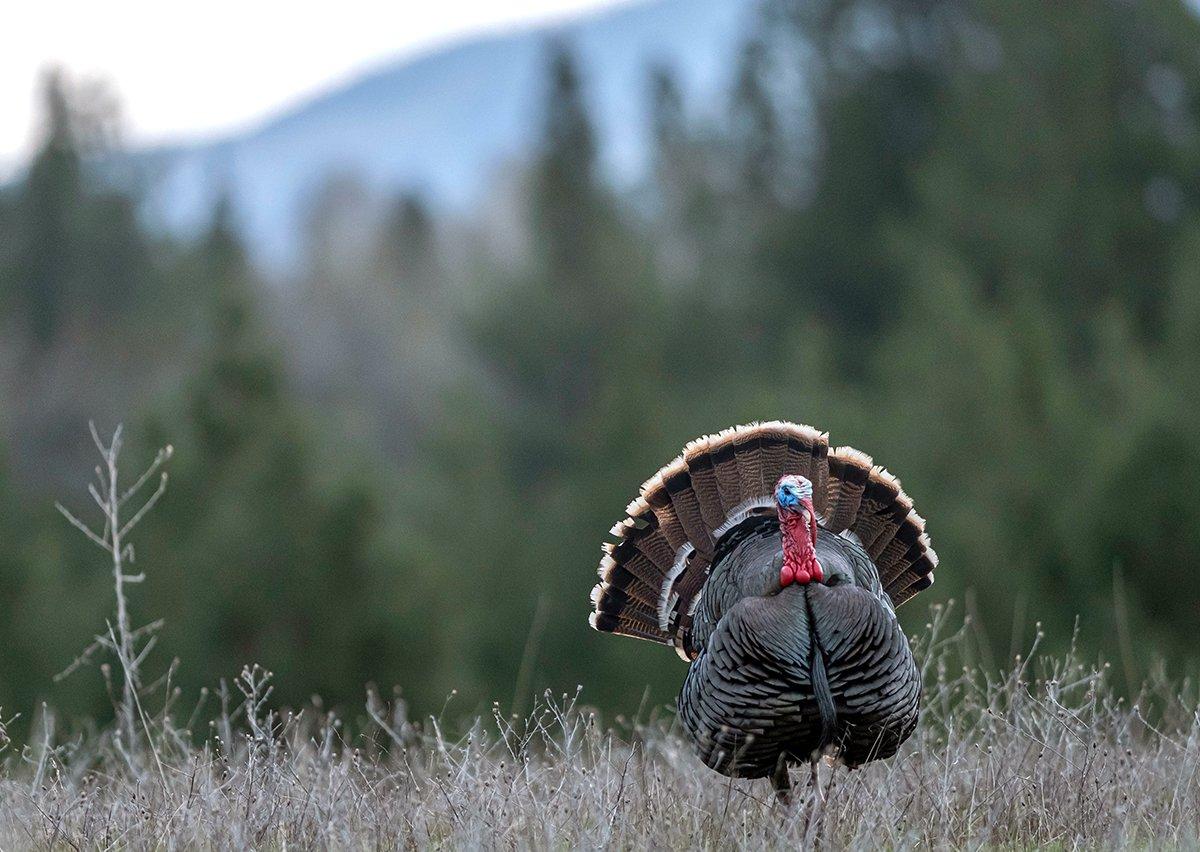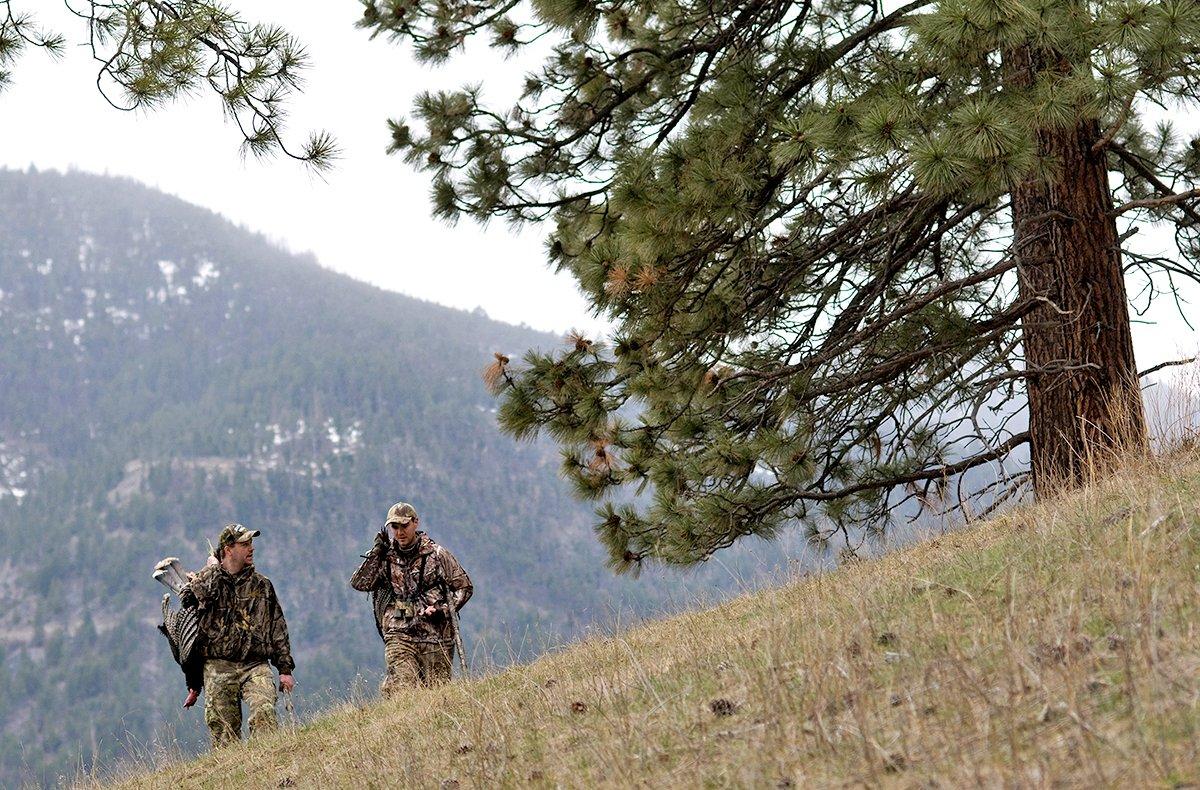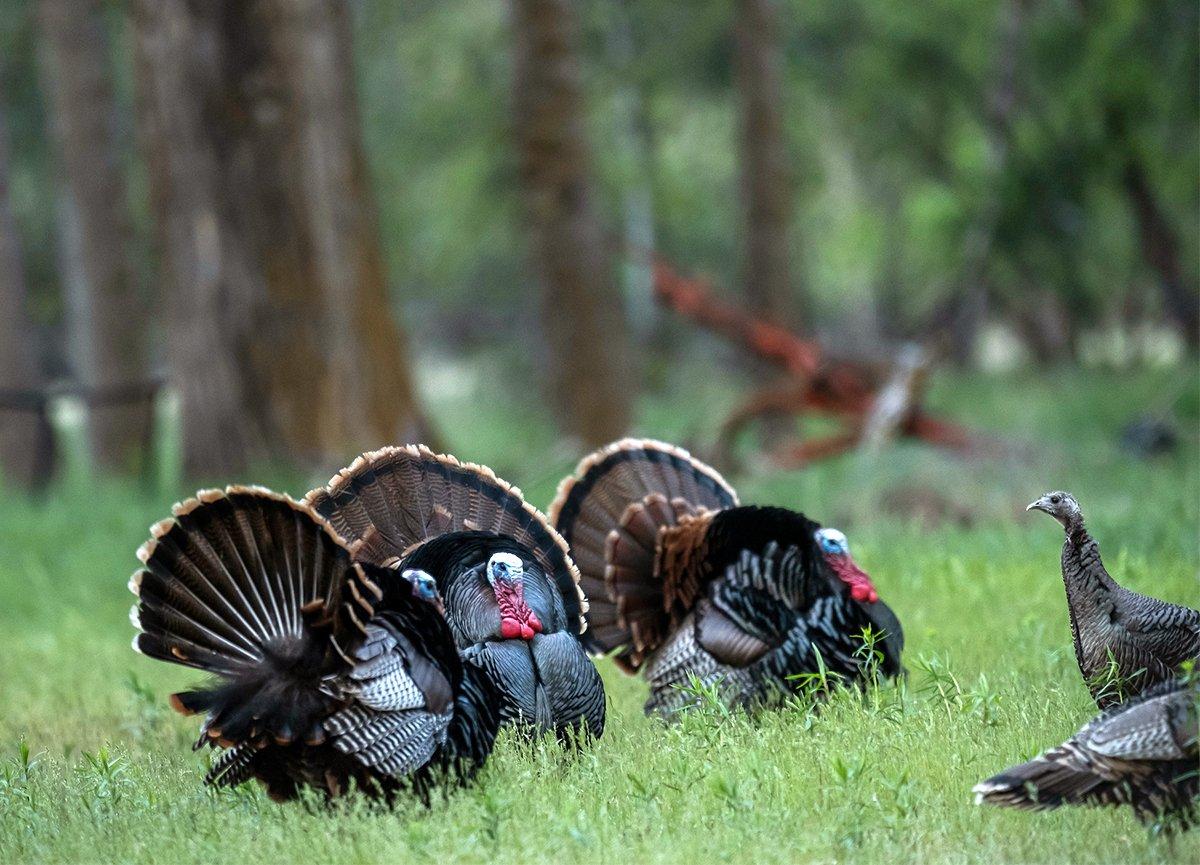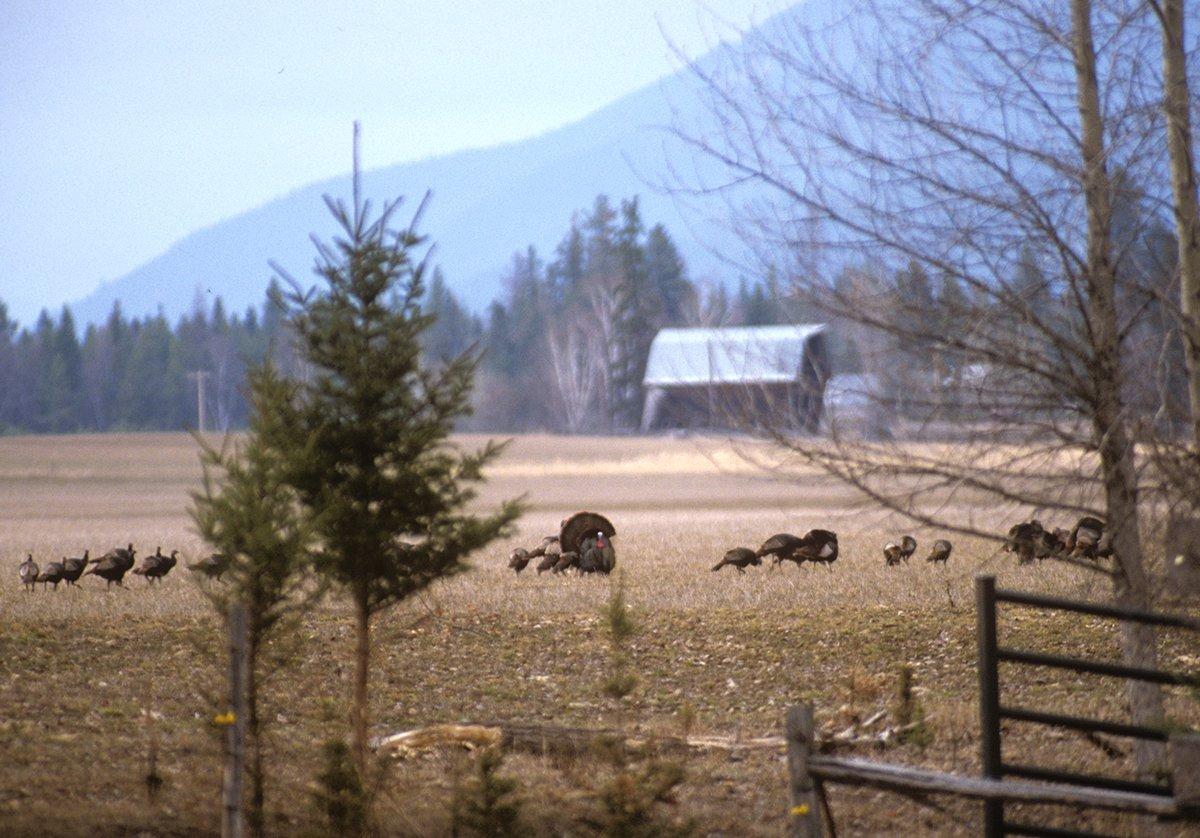Ready to head West and tag a white-tipped tom on your own? Here's your plan
Killing a mountain Merriam's gobbler is a challenge. These turkeys tend to run in large groups with alert wild eyes and strong legs, and they often move far and wide from roosting locations. Don't expect to see them loafing in the same small plots all day like an Eastern.
The springtime elements in the mountains make for a dual challenge. If unexpected, core-chilling spring snow, sleet, and cold winds don't kill you, the steep, unforgiving terrain just might. Now is probably a good time to mention predators, too. I once had a mountain lion bust up a flock of California turkeys coming my way as I sat watching, calling, and listening in timber. Mama bears with their young amble along game trails. There might be rattlesnakes underfoot. This is no place to let your guard down.
But it's a great place to enjoy a DIY turkey hunt. Sure, you could drop a couple grand on an outfitted hunt and kill your Western bird faster, but hunters like us get more satisfaction out of doing it the hard way. And you can save some money like that, too.
Hopefully you've chosen a state to hunt, obtained a turkey permit, and picked out some public ground. Realtree's Turkey Hunting Nation and our annual Western Region Turkey Hunting Forecast are excellent places to start your search. Maybe you've even loaded the truck, made the drive, and started knocking on doors. With just a little luck, you should be able to tag a gobbler in three days. Here's how.
(Don't Miss: How to Guide a New Turkey Hunter)
Day 1: Recon
In some areas of the West, there are seemingly endless acres of land available for hunting. But as you'll soon learn, Merriam's turkeys don't live everywhere. Focus on scouting coniferous hills and mountains, river bottoms, and canyon flats. They seem to favor ponderosa pine roosts and cottonwoods as a rule. Strut zones in higher pasture areas and open ranch properties draw them daily — assuming hens want to feed there or set up nesting nearby.
Finding and roosting turkeys is your first and most important step. Carry optics and spend time glassing during the day. Western turkeys will readily shock gobble, and coyote howlers can really do the trick for making birds sound off. Then again, we once had Wyoming birds inadvertently shock gobbling from a distant ridge as we played a game of horseshoes in camp one afternoon. Pitch. Steel to post. Gobbbbbble.
Do whatever you can to get them to talk, and then take as much time as you can learn their habits. To kill a gobbler after fly-down, serious scouting is required. You've got to pinpoint exactly where western strutters want to be in that big space — then sit there yourself.
Day 2: The Game
Get out there and listen to the woods wake up. Go to the nearest bird when it sounds off, either on its own or in response to your locator calling. Set up within 100 yards or so, and try to call a gobbler in, just as you would back home.
Often, though, Merriam's flocks have other plans. If you don't tag your bird early, make your move as fly-down time slips into the morning lull. Power yelp to make distant contact with a flock. Sometimes the boss hen will chatter at you. Sometimes a pile of toms will bark back like a pack of dogs. Use terrain to make fluid setups as you move closer. Walk with the same pace as the birds you're hunting. You don't want to blow that opportunity, so patience rules.
Once inside the comfort zone of that turkey (or turkeys) you stand a chance at pulling one or the whole group in. Call softly now. Reposition. And stay ready.
No luck calling one in? Eat some lunch. Take a power nap. Then get back there for when they go to roost. Chances are you remember where the birds spent time loafing that morning, after fly-down. Set up right there and hope they come back (although these nomads don't always). Even so, you might have a nice longbeard hustle away from the group as they go to bed.
In some areas of the West there are seemingly endless acres of land available for hunting. But as you'll soon learn, Merriam's turkeys don't live everywhere. Focus on scouting coniferous hills and mountains, river bottoms, and canyon flats. They seem to favor ponderosa pine roosts and cottonwoods as a rule.
What if you don't kill a turkey on Day Two? Don't leave until it's dark. With any luck you'll watch as dozens of mountain birds hustle away into a gorgeous canyon or, more likely, up to a shelf, bench or broad, quiet place with a 360-degree view all around.
Set your alarm clock early. Nobody said you'd be getting much sleep on this trip.
Day 3: Pull the Stops
Okay, your flight leaves a long drive away that afternoon. It's time to get it done.
But the weather has turned brutal — hey, we warned you that would happen on a mountain turkey hunt. But that's no reason to sleep in. Sneak in close to that roost and carefully set up a pop-up blind in the dark. Stake some decoys within range. Sit. Call. Be patient for at least the first few legal hours — but keep your eyes on the clock.
Glassing some birds at a distance? It's time to get out, shake off that chill you acquired in the blind, and put a stalk on that flock. Use the terrain to cover your movements as you sneak in closer, with safety ever in mind as you reposition.
Remember, if you don't get a bird now, you're going home empty-handed. Once you're in view of the turkeys, but not close enough to kill one, whip out that tail fan in your vest's game pouch and bellycrawl into view, making like a tom challenging the established pecking order. Gobblers in the group might just come running to meet the interloper. Be patient, but keep an eye on the time.
Still no turkey? You might have one more last-ditch play. When you're driving the back roads in Merriam's country, you'll probably see strutters hanging out near farmsteads and pastures. Find a farmer on his tractor and respectfully make your case for permission to hunt the turkeys you've glassed from the road. It might be easier than you think. Some Western landowners aren't warm and fuzzy over huge flocks of wild turkeys. At this point, you've got nothing to lose by asking.
(Don't Miss: Bowhunting Turkeys is Hard. This Advice Makes it Easier)
After the Hunt
Okay, you've got a Western bird by the feet. Nice work. And it's got the milk-white tailfeather tips you wanted. Time to social media brag on your Grand Slam Merriam's. After you get to the airport. But what if your Western bird has tail tips closer in color to coffee than milk? Relax. There's a good chance your hard-earned mountain gobbler is one of the many hybridized birds running around west of the Mississippi. It could be a Merriam's and a Rio Grande gobbler. With a little Eastern mixed in too, location depending. Some use the derogatory term dirty birds for these hybrids. I don't.
All are reason to celebrate. Especially since you did it on your own.
Gear to Go
Pack a turkey vest with a seat cushion as long sits and adverse weather conditions aren't uncommon out West. Carry a variety of hats, for cold weather and warm (you'll possibly see both on the same trip). Pack a hoodie, a jacket, and especially rainwear (ideally the portable kind you fold up and slip into your vest). You need reliable boots that are sturdy enough to handle rocks and rough cover, but durable too, so you can move up and down steep terrain without blistering up. Bring base layers for added warmth, and don't forget a small, portable first-aid kit and waterproof matches. This truly is no time to chance it.
Don't skimp. This country will kill you if it can. Don't let it.
What makes Realtree.com the best online resource for turkey hunters? See for yourself.











